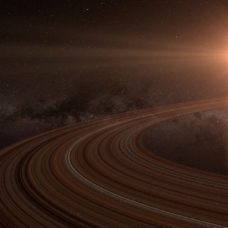Using the Kepler space telescope, NASA discovered ten new exoplanets that are located in the habitable zone of their respective stars.
The method used by space missions for the detection of exoplanets is that of planetary transit, the observation of the decline in luminosity of a star when a planet passes in front of its disc.
Although possible from terrestrial telescopes, this method suffers from the effects of atmospheric turbulence which causes fluctuations in luminosity generally greater than the decline caused by possible planetary transit.
Kepler telescope identifies 10 new Earth-sized planets that lie in the habitable zone.Click To TweetIn space, however, telescopes can detect lower luminosity variations, and in particular, those produced by the transit of planets as small as the Earth.
The Hunt for Habitable Extrasolar Planets
For almost twenty years, exoplanets, these distant planets outside our solar system, are the object of real hunting. It all began in 1995, when two Swiss scientists of the Observatory of Geneva announced the discovery of the very first exoplanet, 51 Pegasi b. But for many years, the discoveries have been made in dribs and drabs.
In 2006, the launch of the European CoRoT satellite by ESA made the first turn in the search for exoplanets. Corot discovered 32 planets in total, especially the first super-Earth, a rocky planet several times the mass of the Earth.

Then came Kepler that revolutionized the search for exoplanets.
Since its launch in March 2009, Kepler, the space telescope designed by NASA has discovered thousands of exoplanets.
Kepler keeps its eyes on over 145,000 stars, measuring their light about every 30 minutes, continuously, for four years. While before it took months to find one exoplanet, Kepler detects two per day on average.
10 new Earth-like Exoplanets Confirmed
Planets entirely covered with water, or with an ocean of lava, or planets orbiting two suns . . . the potential discoveries of Kepler never cease to fascinate.
Yesterday, Monday, June 19th, 2017, NASA has released the survey catalog of Kepler’s 4-year mission. Among thousands of candidates and hundreds of confirmed exoplanets, 10 Earth-like exoplanets of similar size were located in the habitable zone of their star, at a distance where water could exist in a liquid state.

These new discoveries, following similar recent announcements, suggest that Earth-like exoplanets might not be too rare in the Milky Way.
Since the beginning of its mission in 2013, Kepler has identified 4,034 candidates, among which 2,335 have been verified as exoplanets. Of the 50 near-Earth size planets, 30 have been verified to be located in the habitable zone of their star.



















Comments (0)
Most Recent